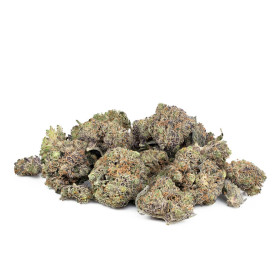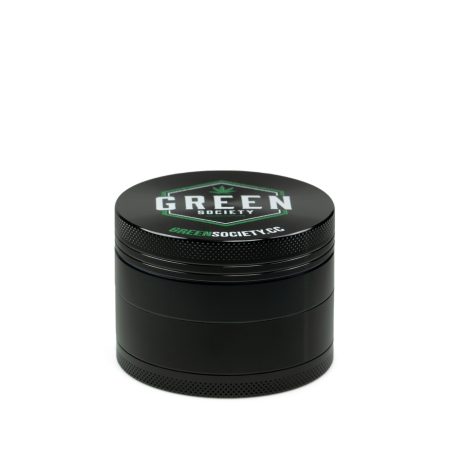Marijuana
Cannabis Legalization in 2025: Complete Overview
Over the past decade, global cannabis use among people 12 and older has nearly doubled, rising from 11 percent in 2012 to almost 22 percent by 2022. This dramatic shift highlights just how quickly laws and attitudes are changing around the world. As policymakers adapt to new realities, consumers and businesses alike face a labyrinth of rules and rights. Understanding today’s legal cannabis landscape means navigating unique social, economic, and health-driven approaches that shape access in every region.
Table of Contents
- Defining Cannabis Legalization in 2025
- Global Models and Regional Differences
- How Legal Cannabis Purchases Work Online
- Legal Rights and Restrictions for Users
- Risks, Compliance, and Safety Guidelines
Key Takeaways
| Point | Details |
|---|---|
| Global Legal Frameworks | Cannabis legalization is highly diverse, with different regions adopting tailored regulatory models influenced by cultural and political contexts. |
| User Rights and Restrictions | Legal rights related to cannabis consumption vary significantly across jurisdictions, emphasizing the importance of understanding local laws. |
| Digital Purchasing | Online cannabis transactions are governed by strict regulations to ensure compliance and consumer safety, necessitating awareness of local requirements. |
| Safety and Risks | Responsible cannabis consumption involves adhering to safety guidelines and staying informed about potential risks associated with use. |
Defining Cannabis Legalization in 2025
Cannabis legalization represents a complex and rapidly evolving legal landscape that continues to reshape societal approaches to cannabis consumption and regulation. According to the United Nations Office on Drugs and Crime (UNODC), as of December 2024, legal cannabis frameworks have emerged across multiple jurisdictions, demonstrating significant global policy transformation.
The current legalization trends reveal nuanced approaches to cannabis regulation. Jurisdictional variations are prominent, with different regions implementing distinctly structured legal models. In Canada and Uruguay, for instance, national frameworks permit cannabis cultivation and sale, while 28 U.S. jurisdictions have established their own unique regulatory environments. Some regions prioritize state-controlled markets, whereas others allow for-profit commercial engagement.
Research from the National Institute on Drug Abuse (NIDA) highlights critical insights into the societal implications of cannabis legalization. Usage rates have dramatically increased, rising from 11% in 2012 to nearly 22% in 2022 among individuals aged 12 and older. This substantial growth underscores the urgent need for comprehensive research examining:
- Long-term health impacts
- Variations in product THC concentrations
- Social and economic consequences of widespread legalization
- Regulatory frameworks that balance consumer access and public safety
Understanding cannabis legalization requires recognizing its multifaceted nature. It isn’t simply about permitting consumption but creating responsible, well-structured systems that address public health, economic opportunities, and individual freedoms simultaneously.
Global Models and Regional Differences
Cannabis legalization continues to evolve globally, with profound variations in regulatory approaches that reflect complex cultural, political, and economic landscapes. According to the United Nations Office on Drugs and Crime (UNODC), national strategies for cannabis regulation demonstrate significant diversity, ranging from fully commercialized markets to strictly controlled state models.
The spectrum of cannabis regulation reveals fascinating geopolitical nuances. While Canada and most U.S. jurisdictions have embraced for-profit production and sale, Uruguay maintains a distinctly different model of state-controlled retail with limited commercial involvement. These divergent approaches underscore how different societies conceptualize and manage cannabis as both a potential economic resource and a public health consideration.
Interestingly, research from Infodemiology highlights the global discourse surrounding cannabis legalization through social media analysis. Public sentiment varies dramatically across regions:
- Oceania leads with 68.13% support for legalization
- Americas follow with 59.21% public backing
- Africa demonstrates 53.54% supportive sentiment
These percentages reveal that public opinion is not monolithic but deeply influenced by regional cultural, legal, and social contexts. The variations suggest that cannabis legalization is less about a universal template and more about nuanced, locally-tailored approaches that balance individual freedoms, public health considerations, and economic opportunities.
Understanding these global models requires recognizing that cannabis legalization is not a one-size-fits-all proposition. Each jurisdiction crafts its approach based on unique social dynamics, economic goals, and public health priorities, creating a rich and complex global tapestry of cannabis regulation.
Here’s a comparison of major national cannabis legalization models as of 2025:
| Country/Region | Legal Framework Type | Retail Model | Key User Rights |
|---|---|---|---|
| Canada | Federal legalisation | For-profit commercial Licensed dispensaries |
Cultivation and sale Adult use legal |
| Uruguay | State-controlled | Government retail Limited commercial |
State-regulated supply Personal use permitted |
| USA (selected states) | State-level legalisation | Mixed: for-profit commercial Medical or adult use |
Cultivation and sale Varies by state |
| Germany (from 2024) | Regulated legalisation | Limited retail Personal cultivation |
Up to 25g public 50g at home Adults 18+ |
| Czech Republic (from 2026) | Regulated decriminalisation | Personal growing | Up to 3 plants 25g public 100g at home |
How Legal Cannabis Purchases Work Online
Online cannabis purchasing represents a sophisticated digital ecosystem governed by strict regulatory frameworks.
INFOGRAPHIC:infographic_content] According to the [American Bar Association, jurisdictions like Ohio have established comprehensive legal mechanisms to regulate digital cannabis transactions, ensuring robust compliance and consumer protection.
Digital procurement channels have revolutionized cannabis access, creating streamlined, secure purchasing experiences. Legally compliant online platforms typically require several critical verification steps:
- Age verification through government-issued identification
- Proof of residency in jurisdictions permitting legal cannabis sales
- Secure payment processing through approved financial channels
- Strict quantity limits per transaction
- Mandatory tracking of purchase histories
Research from Science Daily highlights an unexpected benefit of legal online cannabis procurement. The Weed Care study suggests that regulated digital platforms potentially reduce problematic consumption patterns by providing safer products and easier access to counseling resources. This approach transforms cannabis purchasing from a potentially risky transaction to a controlled, transparent process.
Navigating online cannabis purchases requires understanding local regulations, which vary significantly between jurisdictions. Consumers must remain informed about their specific regional requirements, ensuring they engage only with licensed, legally compliant online dispensaries. Learn more in our comprehensive guide to understanding legal cannabis online purchases, which breaks down the nuanced landscape of digital cannabis transactions.
Successful online cannabis purchasing hinges on responsible consumption, legal awareness, and selecting reputable digital platforms that prioritize consumer safety and regulatory compliance.

Legal Rights and Restrictions for Users
Cannabis legalization introduces a complex landscape of user rights and restrictions that vary dramatically across jurisdictions. According to recent legal frameworks, cannabis consumption is not a blanket permission but a carefully regulated privilege with specific parameters.
European countries provide nuanced examples of these evolving legal boundaries. Wikipedia’s entry on the German Cannabis Act illustrates the intricate nature of cannabis regulations. In Germany, adults aged 18 and over can possess up to 25 grams in public and 50 grams at home, with critical spatial restrictions:
- Prohibited consumption within 100 meters of schools
- No use near kindergartens or playgrounds
- Restricted consumption in city center pedestrian zones between 07:00 and 20:00
Similarly, research on the Czech Republic’s cannabis legislation reveals another sophisticated approach. Starting January 1, 2026, the country will permit:
- Personal cultivation of up to three cannabis plants
- Home possession of 100 grams
- Public possession limited to 25 grams
- Emphasis on personal use over commercial distribution
Learn more about understanding safe cannabis purchases online, which can help navigate these complex legal landscapes. The key takeaway is that legal rights are not uniform but depend on specific local regulations, requiring users to stay informed and compliant with their specific jurisdictional guidelines.
Responsible cannabis consumption means understanding not just what is permitted, but the nuanced restrictions that accompany those permissions. Each jurisdiction crafts its approach to balance individual freedoms with public safety, making ongoing legal education crucial for cannabis users.
Risks, Compliance, and Safety Guidelines
Cannabis consumption demands a comprehensive understanding of potential risks and safety protocols. Modern research provides increasingly sophisticated approaches to monitoring and mitigating potential negative outcomes associated with cannabis use.
Advanced technological solutions are emerging to address public safety concerns. ArXiv research introduces groundbreaking eye-tracking analytics as an objective method for assessing cannabis impairment. This innovative approach reveals significant changes in oculomotor control post-consumption, potentially revolutionizing how we measure and prevent cannabis-related risks in public and occupational settings.
Identifying and preventing potential long-term risks is crucial. Bayesian machine learning research offers unprecedented insights into predicting cannabis use disorder (CUD) among young adults by analyzing complex risk factors:
- Biological sex variations
- Delinquency indicators
- Specific personality trait assessments
- Early intervention potential
Safety guidelines for responsible cannabis consumption include:
- Always purchase from licensed, verified dispensaries
- Start with low dosages
- Avoid operating machinery while under influence
- Store cannabis products securely away from minors
- Understand personal tolerance levels
Learn more about understanding safe cannabis purchases online, which provides additional guidance on responsible consumption.
Ultimately, responsible cannabis use requires continuous education, self-awareness, and a commitment to personal and community safety. By staying informed and following evidence-based guidelines, users can minimize potential risks while enjoying legal cannabis products.
Navigate Cannabis Legalization with Confidence and Convenience
Understanding the evolving landscape of cannabis legalization in 2025 can feel overwhelming. With varying regulations on user rights, legal online purchases, and safety guidelines, making informed decisions is critical. You may find yourself wondering how to access quality cannabis products legally and safely while keeping up with these complex rules.
GreenSociety.cc is here to bridge that gap by offering a trusted, user-friendly online dispensary tailored to your needs. Whether you seek flowers, edibles, concentrates, or CBD products, our platform ensures discreet, fast delivery and verified compliance with legal standards. This seamless experience empowers responsible consumers to enjoy cannabis within the boundaries of local laws.
Discover how to shop with confidence and stay within legal limits by visiting our comprehensive cannabis platform. Learn about safe purchasing steps through our educational guides and explore a wide selection of products suited for both new and seasoned users.

Start navigating the new era of cannabis legalization today. Visit GreenSociety.cc now to access expertly curated cannabis products and enjoy peace of mind with every purchase.
Frequently Asked Questions
What are the main differences between state-controlled and for-profit cannabis markets?
State-controlled markets, like Uruguay’s, limit commercial involvement and regulate retail sales by the government, prioritizing public health, while for-profit markets allow private companies to cultivate and sell cannabis, focusing on economic opportunities.
How has cannabis usage changed among the population in recent years?
Cannabis usage among individuals aged 12 and older has nearly doubled, rising from 11% in 2012 to nearly 22% in 2022, indicating increased acceptance and consumption of cannabis in society.
What are some key safety guidelines for responsible cannabis consumption?
Key safety guidelines include always purchasing from licensed dispensaries, starting with low dosages, avoiding operating machinery while under the influence, storing products securely away from children, and understanding personal tolerance levels.
What potential risks are associated with cannabis consumption?
Potential risks include cannabis use disorder (CUD), impaired cognitive function, and long-term health impacts, emphasizing the importance of education, monitoring, and compliance with legal guidelines to mitigate these risks.
Recommended
- 7 Must-Know Cannabis Trends 2025 for Online Buyers ~ Green Society Blog
- 7 Essential Cannabis Shopping Tips for 2025 ~ Green Society Blog
- Legalization of Marijuana in Canada ~ Green Society Blog
- Legalized Cannabis in Canada ~ Green Society Blog
- Top Sports Betting Trends 2025: Insights for Bettors – Betco














